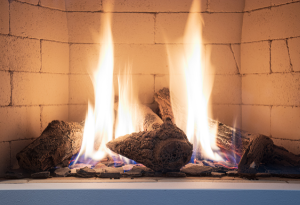Does A Gas Fireplace Need A Chimney?
Whether you are thinking about putting a new gas fireplace into your current home, or you are considering converting from wood to gas, you may be wondering “Does a gas fireplace need a chimney?” At Best Chimney Services, we often receive this question. Today, we’ll dive into the way gas fireplaces need to be set up to answer your chimney questions.

Why People Are Choosing Gas Over Wood
Gas fireplaces are making a comeback! There are a variety of reasons why more and more people are choosing gas. For one thing, although you can heat with firewood or gas, gas insert fireplaces are more efficient. They burn 75%-99% of fuel energy into heat. Wood, on the other hand, only converts 10%-30% of fuel energy into heat. In addition, gas fireplaces are easier than wood to start, use and maintain and you can control their heat output. Check out the blog that we wrote for people who are thinking of converting from wood to gas for more reasons why people are choosing gas over wood.
Does A Gas Fireplace Need a Chimney?
The answer is, “it depends.” In most cases, gas fireplaces need a chimney, but there are certain types of units that are directly vented out the side of the house instead of vertically up the chimney.
When Do Gas Fireplaces Need a Chimney
If you choose a log set, an open prefabricated gas fireplace or certain gas inserts, they will require a chimney vent. These units are either installed into your existing masonry fireplace with a sleeve installed in the flue for venting or a new steel chimney stack can be installed for venting, which is normally done for new builds or additions and framed out during the construction process.
With any of these options, gas lines will need to be run in advance and possibly electrical for the blower.
When Gas Fireplaces Do Not Need a Chimney
Some gas inserts and most stand alone enclosed gas fireplaces do not need a chimney. These fireplaces will still need a vent for exhaust and fresh air intake similar to a chimney vented unit, but will be vented horizontally and out the side of the home instead of the chimney. This is a great option for those without usable flue space.
Additionally, there are vent-free (or ventless) fireplace options available that do not require the chimney for venting. Some of these units have safety measures that will automatically shut down the unit if the oxygen levels in the room fall below a safe level. Despite this, these types of fireplaces have been banned in some areas of the United States because of safety concerns.
The post Does A Gas Fireplace Need A Chimney? appeared first on Boston’s Best Chimney.